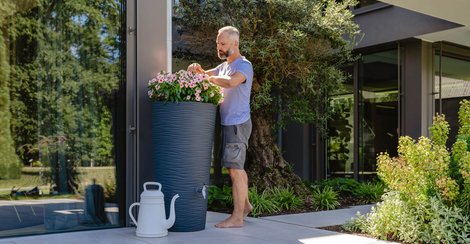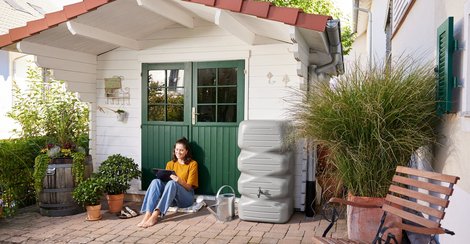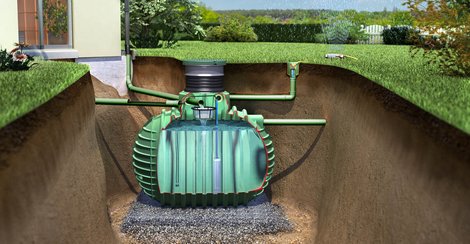How Much Water Does my lawn Need?
How can you keep your lawn looking lush and healthy for as long as possible? The answer is simple: water it regularly. But how much water does a lawn actually need? And what else should you keep in mind? Lawn expert Wolfgang Henle has the answers.
If you want a healthy green lawn, you shouldn't rely solely Mother Nature. Rain usually isn’t enough to reach the deeper layers of soil, so humans have to help out. Although there are DIN standards (18917 and 18919) for lawn care in Germany, they do not specify how much water is needed– it depends too much on local conditions. Longer grass needs less water (which is why it is better not to mow the lawn too short on the hottest days of the year), and the weather and soil are also important factors. For example, the loess loam in the Stuttgart area can absorb and store water like a sponge, explains agricultural scientist Wolfgang Henle, who trains master gardeners at the State School of Horticulture in Stuttgart-Hohenheim. Further west along the Rhine, on the other hand, there are sandy soils that absorb virtually no water, like a ‘compressed sponge’.
From Drought Stress to Growth Depression
As a general guideline, it’s often recommended to use around 20 litres of water per square metre of lawn per week. . In reality, grass consumes much more: U.S. scientists have measured that it can evaporate 4 to 10 litres of water per day at 30°C. But how can you tell what your own lawn actually needs? ‘You can tell whether you are giving your lawn enough water in addition to the rain by checking whether the soil is moist to a depth of more than ten centimetres,’ explains the expert.
Professionals like Wolfgang Henle don't need to dig into the ground with a spade to find out – they can tell when a lawn is too dry just by looking at it. The first sign of ‘dry stress’, as the expert calls it, is a dark lawn. This is because the concentration of salts in the blades increases as their water content decreases. The stored water also ensures the stability of the plants, ‘like a water bomb,’ says Henle. At the latest when the blades no longer stand up on their own, it is time to water. Otherwise, the tips of the leaves will dry out and the grass will fall into a state of growth depression, explains the expert. Instead of growing, the plant puts all its energy into cooling itself. By the time it recovers, the more resistant herbs will have already sprouted. By the end of summer, the lawn will have turned into a weed-filled meadow.
Not Just About Saving Water
To prevent this from happening, you should not skimp on water. Sports fields, for example, are watered with 15 to 20 litres per square metre per day to maintain their quality. It all depends on the demands placed on the lawn, emphasises Wolfgang Henle. He allows much of his own garden to grow as a well-tended orchard meadow, where even his dog can run freely. He encourages hobby gardeners to ask themselves whether they really need a weed-free lawn or if they can “treat themselves to a few herbs.” He only waters around 150 square metres around the patio intensively. And of course, instead of tap water, he uses rainwater from a buried rainwater tank. The plants thrive on the low-lime water and Henle enjoys the lower costs. Rainwater also benefits the climate as it does not have to be treated in sewage treatment plants first.




